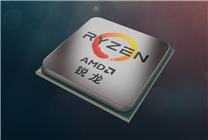AMD’s Zen 6 Architecture: A Leap Forward with Enhanced AVX512 Support
Key Highlights
- AMD Leads with AVX512: AMD’s upcoming Zen 6 architecture will offer comprehensive support for the AVX512 instruction set, outpacing Intel’s Core desktop offerings.
- Innovative Instruction Extensions: Zen 6 will introduce new extensions, including the groundbreaking AVX512_FP16, enhancing AI and machine learning applications.
- Streamlined Development for Developers: With FP16 support, developers can run advanced AI models more efficiently, simplifying the development process on x86 platforms.
On November 11, Kuai Technology reported that Intel has fluctuated in its support for the AVX512 instruction set across its Core desktop processors. In stark contrast, AMD’s latest Zen 5 architecture delivers robust support for this advanced instruction set, with even more enhancements anticipated in the upcoming Zen 6.
Recent updates in the GNU assembler patch list have unveiled the introduction of the Znver 6 architecture, expected to maintain compatibility with all instruction sets from Zen 5 while adding several new extensions, specifically: AVX512_BMM, AVX_NE_CONVERT, AVX_IFMA, AVX_VNNI_INT8, and AVX512_FP16.
A Closer Look at New Extensions
Among these extensions, AVX512_BMM is entirely new, while the others are adaptations found in Intel’s Granite Rapids Xeon processors. Designed to enhance matrix bit mask operations, AVX512_BMM promises significant advantages for binary neural networks—an essential component in modern AI applications.
However, the standout feature is AVX512_FP16, which adds critical support for the FP16 data format. AMD is not only advancing technology but is also the first to integrate FP16 support into desktop clients. Historically, developers creating AI or machine learning applications on desktop platforms were limited to the FP32 format or had to rely on external accelerators—leading to increased costs and complex implementations.
The Importance of FP16 Support
With Zen 6’s support for FP16, AMD allows for streamlined development processes crucial for today’s technological landscape. While ARM architecture has long included FP16 support, a vast majority of developers favor x86 platforms. By facilitating local FP16 computations, AMD eliminates the need for vendor-specific SDKs, significantly reducing development times and costs.
Since Intel has chosen to segregate its consumer and enterprise AVX512 offerings, AMD’s commitment to the AVX512 standard is paving the way for it to become the industry norm. This shift positions AMD as the leader in this evolving landscape, ensuring developers have access to the latest advancements without bureaucratic hurdles.
Future Implications for AI Development
The integration of AVX512_FP16 into the Zen 6 architecture could herald a new era for AI on desktop environments. Developers can anticipate enhanced performance, more accessible resources for creating artificial intelligence applications, and the ability to leverage the power of FP16 natively.
As the demand for AI capabilities continues to surge, AMD’s approach could redefine how developers interact with hardware, fostering innovation and broader accessibility. With this enhanced capability, AMD renders the desktop platform increasingly appealing for advanced AI and machine learning initiatives.
Conclusion
AMD’s upcoming Zen 6 architecture not only sets a new benchmark for x86 desktop systems but also redefines expectations around advanced instruction sets like AVX512. By championing FP16 support and providing extensive extensions, AMD positions itself as a leader in the ongoing evolution of machine learning and AI-focused development.
The future looks promising for developers eager to embrace these advancements, as the Zen 6 architecture opens up a new realm of possibilities in artificial intelligence and machine learning on desktop platforms.
Maximizing efficiency while simplifying development hurdles could significantly benefit industries reliant on cutting-edge technology. As AMD continues on this innovative path, the trajectory for AI on desktop systems appears brighter than ever.










